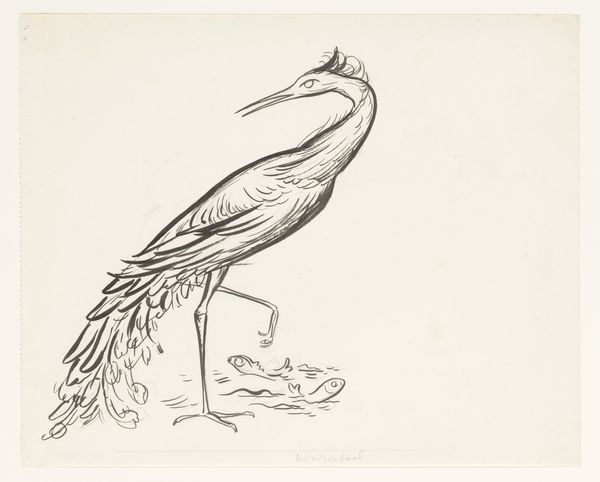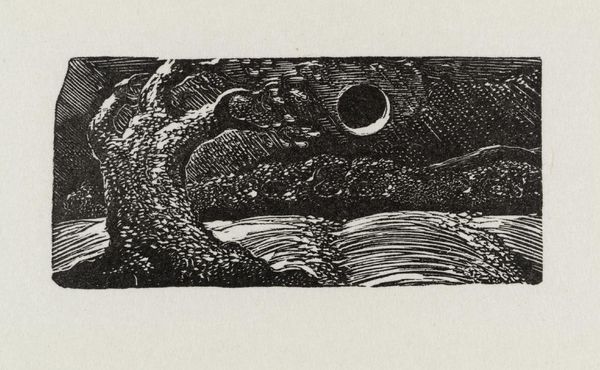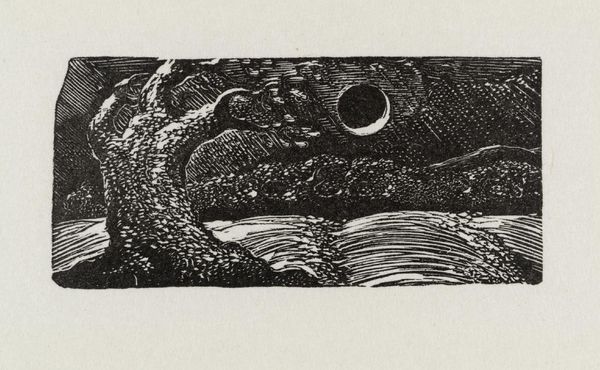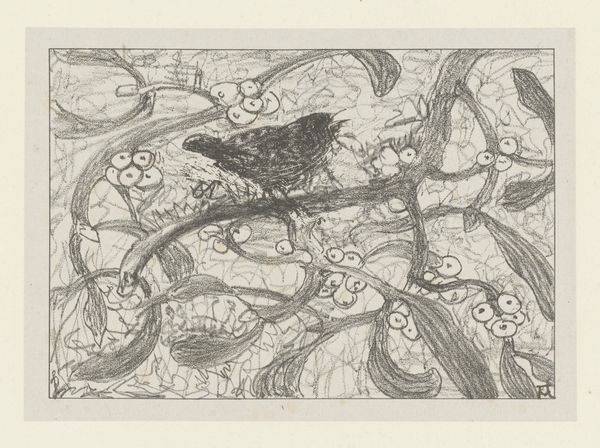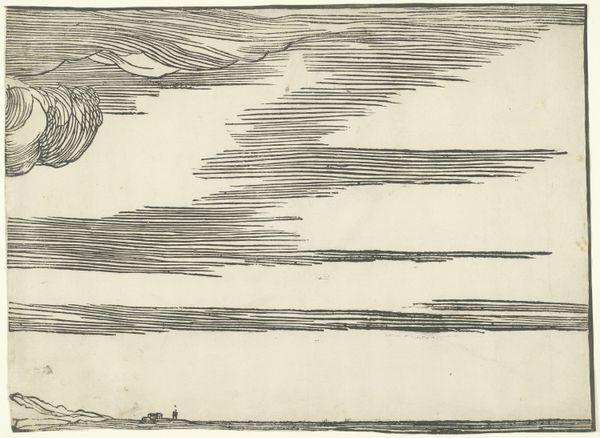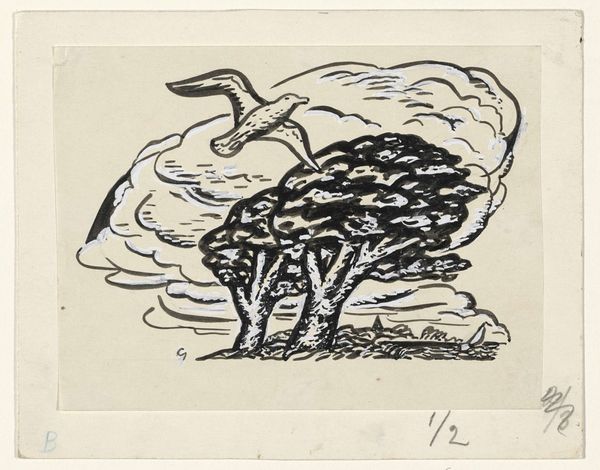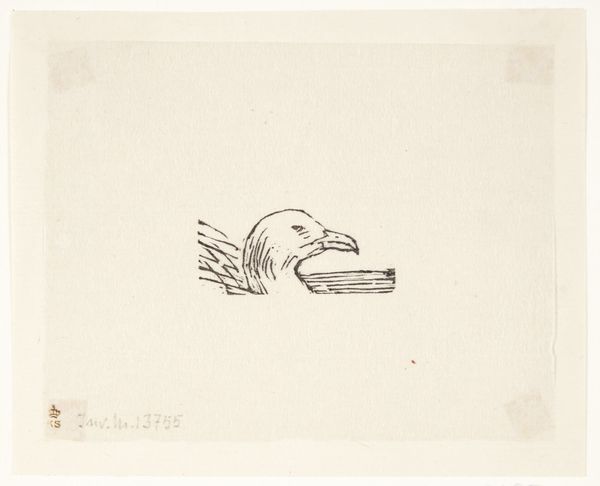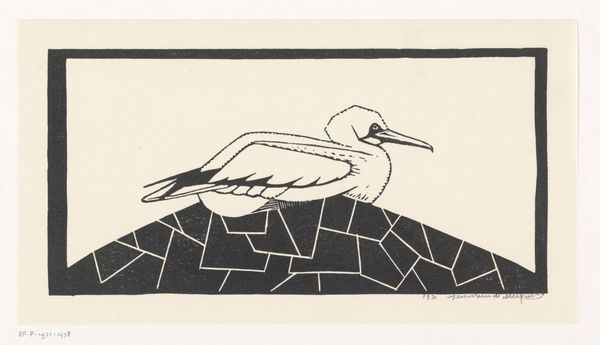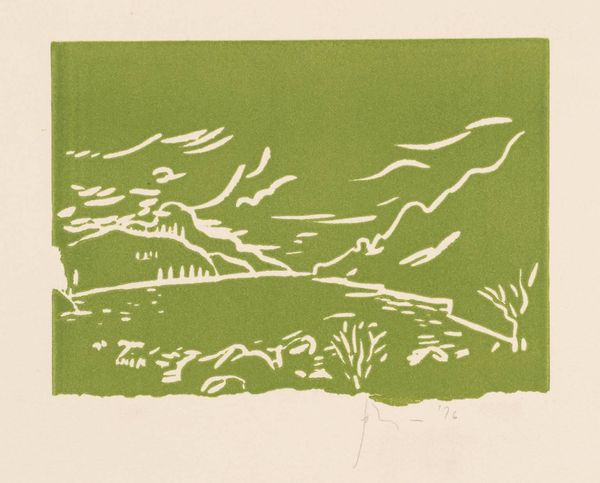
drawing, ink
#
drawing
#
art-nouveau
#
blue ink drawing
#
figuration
#
ink
#
line
#
symbolism
#
cartoon style
Dimensions: height 94 mm, width 151 mm
Copyright: Rijks Museum: Open Domain
Curator: The crisp, contrasting lines of this drawing grab me immediately. There's a powerful graphic quality, despite the subject's inherent gentleness. Editor: We’re looking at "Duif," or "Dove," a blue ink drawing created by Leo Gestel sometime between 1891 and 1941. It's currently held at the Rijksmuseum. For me, the real intrigue lies in the execution; the clear Art Nouveau influence points to mass production possibilities. Was this a design intended for broader distribution? Curator: Absolutely, the linear style lends itself to reproduction techniques. The use of ink allows for a fluidity in design that is not often achieved by this level of clarity and makes me think about the social impact of Gestel’s design – a beautiful yet functional design affordable enough for many. I'd suggest that we consider it an effort to democratize access to symbolic art. Editor: Interesting. I’m drawn more to its symbolism within the art historical context. Doves, of course, are iconic, going way back; images representing purity and peace but it would be interesting to know what cultural or political meaning Gestel associated with this image during its historical period. This particular representation seems quite grounded. Not soaring, but very much present. Curator: Yes, note how the artist has framed the dove. With graphic cloud shapes in one corner, juxtaposed with stylized reeds in another corner. It is interesting how they all play to, what I consider, an interesting material use and creative outcome. The heavy lines around the body of the dove, in comparison with the open unburdened space for the feathers of the bird; as if Gestel sought to convey something in this specific creation. Editor: Agreed. Thinking about this being at the Rijksmuseum, I wonder about how its significance evolved over time, in this public, national collection. I suppose that institutions played an undeniable role in shaping how we understand the intention and affect of such works. Curator: I find it powerful to explore artwork like this, uncovering social factors in both the means of its production, and what materials have helped it last across time. Editor: Yes, this image's journey through various cultural interpretations and museum politics is so enriching, and of course essential to remember.
Comments
No comments
Be the first to comment and join the conversation on the ultimate creative platform.

